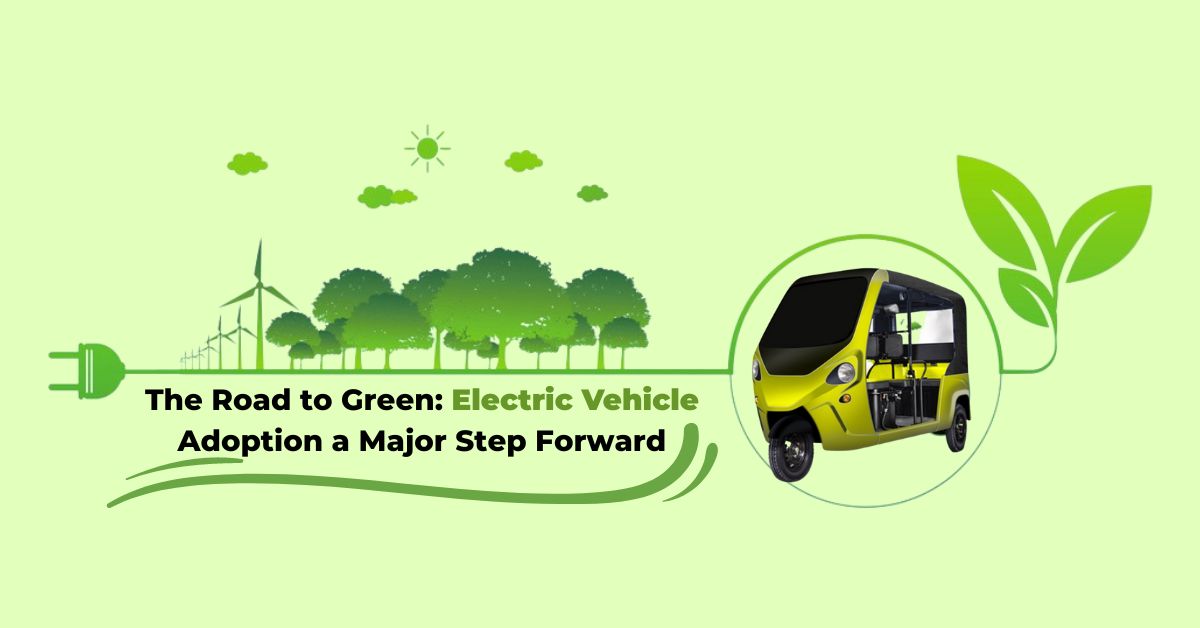
The Road to Green: Electric Vehicle Adoption a Major Step Forward
The scope of electric vehicles is potentially high not only in India but around the world. Manufacturers of electric vehicles are constantly working to surpass one another in this EV race. Fully electric vehicles (EVs) have zero tailpipe emissions and are much better for the environment. Because electric vehicles have no exhaust emissions, driving one can help you reduce your carbon footprint. You can reduce the environmental impact of charging your vehicle further by choosing renewable energy options for home electricity. India is one of the major consumer markets in the world today. According to a World Economic Forum report, it is poised to become the world’s third-largest consumer market by 2030. In 25 global cities dubbed as the world’s EV capitals, approximately 50% of all electric vehicle sales occur, according to a survey by the International Council on Clean Transportation (ICCT).
Central and state government initiatives
The transport sector accounts for 18% of total energy consumption in India. Governments are looking for alternative sources of fuel, like electricity. And India aims to become a major player in the global electric vehicle market. The Indian government is investing heavily in the Indian Electrical Vehicles Sector because EVs are a low-cost, environmentally friendly mode of transportation with enormous potential to close the first- and last-mile connectivity gap.The government has been focusing on stepping up electric vehicle manufacturing. In an effort to reduce emissions and halt the depletion of natural resources, the government has launched numerous PILs and policies that support the EV ecosystem in India. Numerous EV policies that support both the supply and demand sides through incentives, rebates, and other advantages have been introduced by state governments. These policies have gradually and steadily accelerated the use of electric vehicles in India.
Why EVs have seen limited adoption.
The following dimensions can be used to analyse the failure’s causes.
1) Lack of product innovation
The lack of product innovation is one of the main causes of the slow adoption of electric vehicles. Companies have so far failed to highlight how useful an electric vehicle is for price-conscious Indian buyers. The device did not incorporate sustainable performance, and EVs did not offer a sufficient range for intercity travel.
2) Cost Concerns
The value-conscious Indian consumers who would rather choose a cheaper IC vehicle do not favour this high upfront cost.
3) Lack of charging or swapping infrastructure
There are currently approximately 2,000 public charging stations for the 6 lakh electric vehicles on the road.The lack of charging station density is making EV usage more difficult. A significant infrastructural impediment has been identified as the lack of battery and charger standards, along with the high capital intensity of setting up charging or changing stations.
How can this be eliminated?
1) Connected vehicles and telematics
Innovations in the software layer of EVs, a layer that would make it easier to build apps on top of it, would be intriguing to observe. Connected vehicles produce a lot of data that might be used in many different ways.
2) Creating robust charging and swapping infrastructure
A huge opportunity exists to create tech-first charging networks or platforms that are brand- and form-independent and can enable both normal and fast charging.
3) Fleet Management for Commercial Usage
We may anticipate high B2B demand for EVs given the significant cost advantages of operating them. However, because EVs have greater initial expenses, businesses might want to lease or subscribe rather than buy. Therefore, this presents a chance for business owners to develop novel strategies for supplying EVs to B2B clients and enabling effective fleet management at scale.
4) Mobility as a Service
There is severe traffic congestion and worrisome pollution levels on Indian roads. Offering Mobility as a Service (MaaS), wherein customers don’t own vehicles but can access them when necessary, is one of the primary approaches to addressing this. Considering that EVs are more expensive up front than IC vehicles, offering MaaS is essential for mass adoption.
Anikaa Electric Lite Auto Young brand working to create Sustainable, Green & Zero Emission E- Mobility solutions. Anikaa aims of taking e-mobility to the masses and address issues of short distance commute, with focus on first last mile connectivity i.e; to get from your origin to the nearest transportation hub.
We are committed to establishing an environmentally sustainable connectivity ensuring connected Technology based e-mobility solutions. We intend to create Lite Auto as lucrative employment opportunities for lower-income individuals by providing high earnings with minimal operating costs.
Efforts Towards Cleaner Sources
EVs are a potent solution to combat pollution and its adverse effects. With lots of technological advancements, these days we are seeing new specs and EVs coming with new specifications and features that are designed to appeal to customers as much as possible. Fortunately, AIoT-assisted technology helps us overcome numerous obstacles when used in conjunction with other hardware, industrial, and supply chain solutions. Smart energy management improves EV and stationary load management, reduces the risk of grid overload, and enables greater consumption of renewable energy. With the global drive to reduce emissions, every country is now adopting EVs at a much faster pace.


